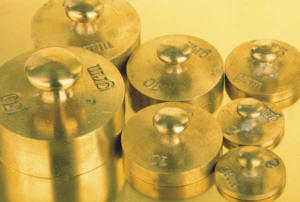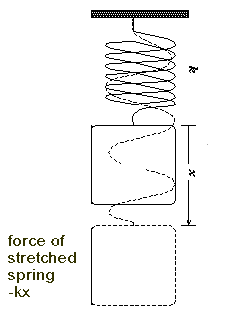|
EQUATIONS OF SCIENCE
|
This law is used not only for metal springs, but also in many other “spring-like” interactions in nature, including interactions between microscopic or subatomic particles. The simple linear nature of the law makes it very convenient to work with. However, this simple linear behavior is just an approximation. Hooke's law describes the opposing force exerted by a spring: F (force, which is equivalent to weight put on the spring) is equal to the distance the end of the spring moved (x) multiplied by the spring constant or a measure of stiffness (k) or F = -kx Weight is the force exerted on an object by gravity. It is measured in newtons (metric system) and in ounces and pounds in the "English" system. Does this sound confusing? Let’s experiment with weights, a spring scale, and a ruler and see if we can figure out what kind of proportion they are talking about.
|


